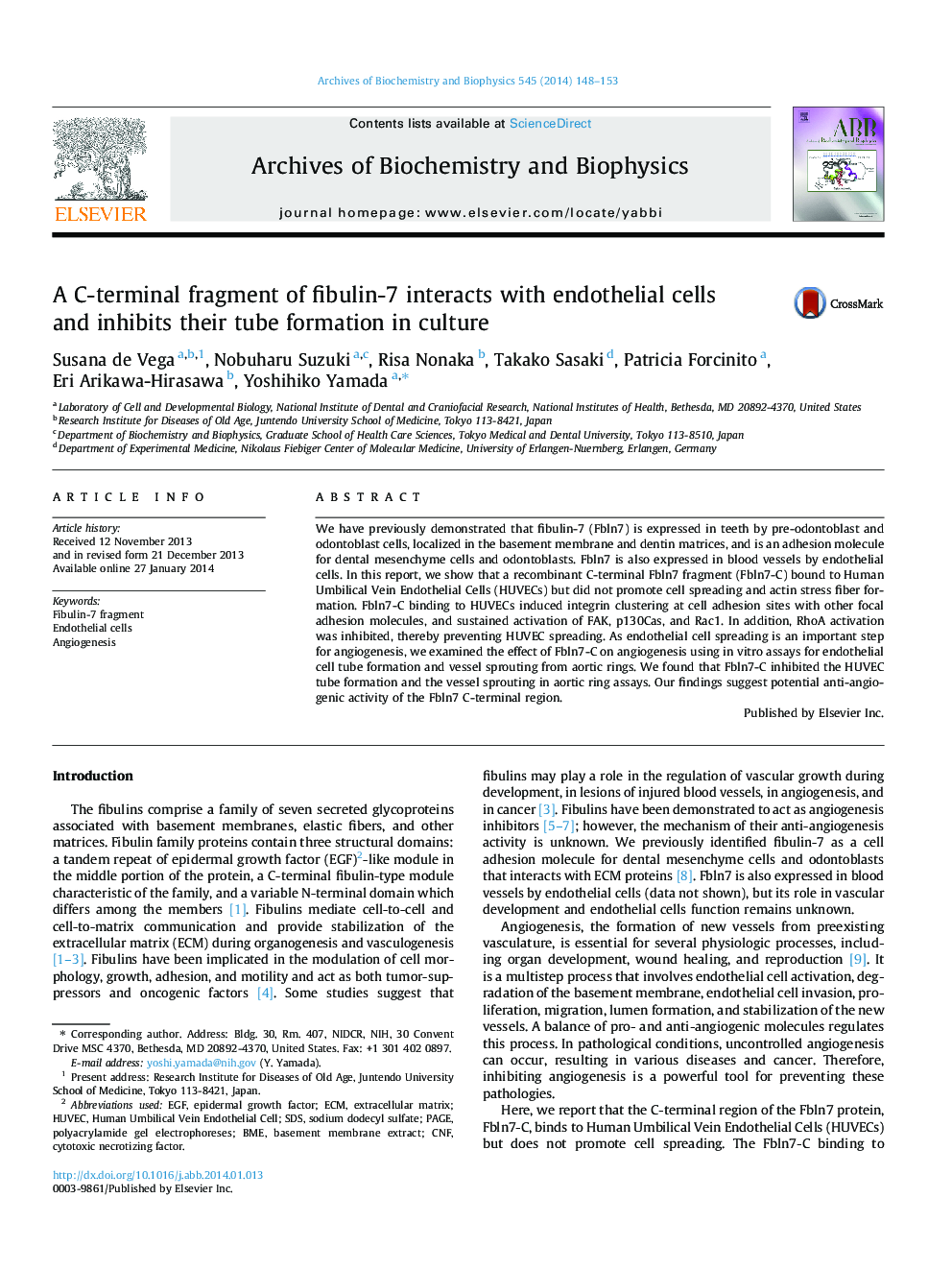| Article ID | Journal | Published Year | Pages | File Type |
|---|---|---|---|---|
| 1925262 | Archives of Biochemistry and Biophysics | 2014 | 6 Pages |
•A C-terminal fragment (Fbln7-C) of fibulin-7 binds to endothelial cells HUVECs.•Fbln7-C does not promote cell spreading and stress fiber formation.•Fbln7-C induces integrin clustering and sustained activation of Rac1.•Fbln7-C inhibits HUVEC tube formation and vessel sprouting in aortic ring assays.•The C-terminal region of Fbln7 may function as an anti-angiogenic factor.
We have previously demonstrated that fibulin-7 (Fbln7) is expressed in teeth by pre-odontoblast and odontoblast cells, localized in the basement membrane and dentin matrices, and is an adhesion molecule for dental mesenchyme cells and odontoblasts. Fbln7 is also expressed in blood vessels by endothelial cells. In this report, we show that a recombinant C-terminal Fbln7 fragment (Fbln7-C) bound to Human Umbilical Vein Endothelial Cells (HUVECs) but did not promote cell spreading and actin stress fiber formation. Fbln7-C binding to HUVECs induced integrin clustering at cell adhesion sites with other focal adhesion molecules, and sustained activation of FAK, p130Cas, and Rac1. In addition, RhoA activation was inhibited, thereby preventing HUVEC spreading. As endothelial cell spreading is an important step for angiogenesis, we examined the effect of Fbln7-C on angiogenesis using in vitro assays for endothelial cell tube formation and vessel sprouting from aortic rings. We found that Fbln7-C inhibited the HUVEC tube formation and the vessel sprouting in aortic ring assays. Our findings suggest potential anti-angiogenic activity of the Fbln7 C-terminal region.
